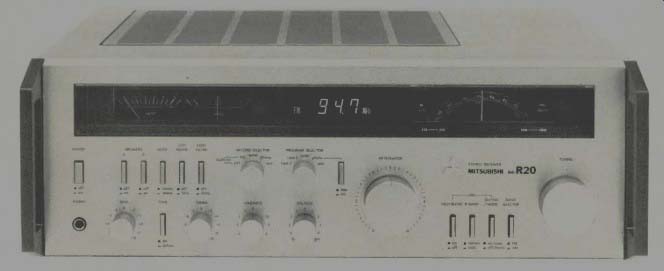
Manufacturer's Specifications
FM Tuner Section:
Usable Sensitivity: Mono, 9.3 dBf (1.6NV).
50-dB Quieting Sensitivity: Mono, 15.0 dBf (3.0 uV); stereo, 36.8 dBf (38 uV).
AM Suppression: 60 dB.
Capture Ratio: 1.5 dB.
Image Rejection: 85 dB.
I.f. and Spurious Rejection: 100 dB.
Selectivity: Wide, 60 dB; narrow, 75 dB.
S/N: Mono, 84 dB; stereo, 80 dB.
THD, Wide I.f. Position: Mono, 0.08 percent at 1 kHz; stereo, 0.1 percent.
THD, Narrow I.f. Position: Mono, 0.15 percent at 1 kHz; stereo, 0.2 percent.
Sub-Carrier Rejection: 60 dB.
Stereo Separation: Wide, 46 dB at 1 kHz, 42 dB at 100 Hz, and 43 dB at 10 kHz; narrow, 40 dB at 1 kHz, 36 dB at 100 Hz, and 40 dB at 10 kHz.
Frequency Response: 30 Hz to 16 kHz, +0.5,-1.0 dB.
AM Tuner Section:
Usable Sensitivity: 300 uV/m with internal antenna.
Selectivity: 30 dB.
S/N: 52 dB.
Image Rejection: 47 dB.
I.f. Rejection: 35 dB.
THD: 0.5 percent.
Amplifier Section:
Power Output: 60 watts per channel, 8 ohms, 20 Hz to 20 kHz, 0.02 percent THD.
Dynamic Headroom: 1.0 dB.
Damping Factor: 120.
Slew Rate: 50 V/uS.
Phono Input Sensitivity: MC, 100 uV; MM, 2.5 mV.
High Level Input Sensitivity: 150 mV.
Maximum Phono Input: MC, 7 mV; MM, 140 mV.
Frequency Response: Phono, RIAA, ±0.3 dB; high level, d.c. to 100 kHz,-2.0 dB.
Rated IMD: 0.02 percent.
S/N (New IHF): Phono MC, 78 dB; MM, 85 dB; high level, 87 dB.
Bass and Treble Control Range: ±10 dB at 100 Hz and 10 kHz.
Low Filter: 12 dB/octave below 18 Hz.
High Filter: 12 dB/octave above 10 kHz.
General Specifications
Dimensions:
18 1/2 in. (46.25 cm) W x 6 3/8 in. (16.56 cm) H x 16 1/8 in. (40.31 cm) D.
Weight: 31 lbs. (14.09 kg).
Price: $560.00.
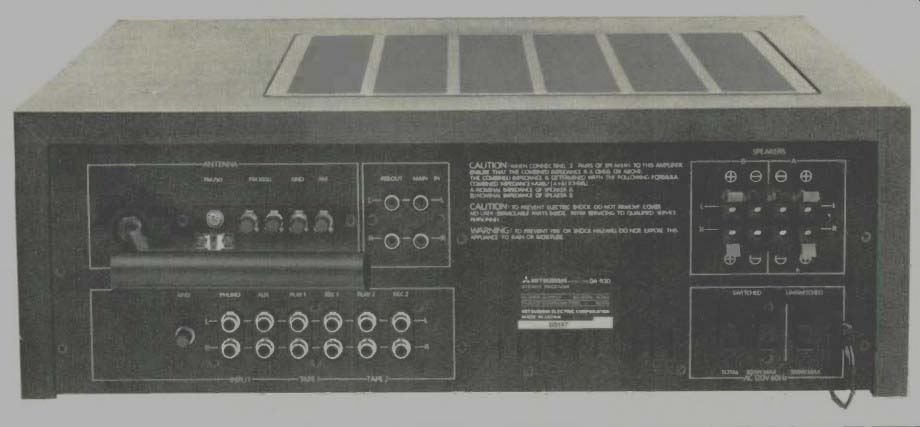
It has been some time since I had an opportunity to evaluate a piece of Mitsubishi high-fidelity componentry, the last encounter having been with their uniquely configured DA-F10 tuner-preamplifier several years ago. Much of what I ad mired at that time has been incorporated into Mitsubishi's first receiver entry for the U.S., plus a great deal of innovation brought about by the passage of time and the advancement of the audio art.
The tuning dial mechanism, carried over from the earlier successful design, employs a rotary dial which, in a small amount of panel space, provides extremely fine vernier tuning action; fully 15 turns of the flywheel-coupled knob are needed to get from one end of the FM band to the other.
Frequency markings here are delineated in 1-MHz increments since nearby, at panel-center, is a four-digit fluorescent frequency read-out which reads FM or AM frequencies, the former to the nearest 100 kHz, the latter to the nearest kHz. Why the two forms of read-out? As far as we could tell, basically for the ease of reading the digital display.
The tuner section has a form of AFC locking system, now quite commonly found on better tuners and receivers, and this lock circuit's operation is indicated by a small light in the area of the rotary dial. Another indicator in this region of the panel is the stereo light.
Controls along the lower section of the front panel include a power on/off push button at the left, slim rectangular push buttons for speakers "A" or "B," stereo/mono mode selection, and low- and high-cut filters. Below this bank of but tons are the step-type bass and treble tone controls, with a tone-defeat push button located between them. Next are separate Record Selector and Program Selector switches which permit the user to record any program source onto tape while listening to any other program source. Tape dubbing (tape 1 to tape 2 or vice versa) is also accomplished by means of the Record Selector switch. While the Program Selector switch has only one phono setting, a nearby slim push button chooses moving-toil or moving-magnet operation of the associated phono input jacks on the rear panel.
Below the selector switches are a Balance control and a Loudness control, which last operates completely independently of the large master volume control just to its right. The master volume control is arbitrarily calibrated from 0 to 10 for easy resetting.
Additional push buttons located between the master volume control and the Tuning knob include a high-blend switch (for reduced noise during weak-signal stereo FM reception), an i.f. band switch with wide and narrow settings, a combination mute/mode switch (muting off/mono on, or muting on/auto on), and an AM/FM band selector. As with many other tuners and receivers of recent vintage, the combining of the mute on/off and the mono/stereo FM selection into a single switch does prevent the diehard FM dx-er from trying to listen to weak-signal stereo reception in stereo, and for this reason we have objected to this cost-cutting approach in the past. From a practical point of view, however, few users would be inclined to listen to stereo FM at the noisy background levels at which this tuner section's muting circuitry is likely to block reception, so I no longer feel as strongly about this slight compromise in flexibility of controls.
The rear panel of the DA-R20 is equipped with the usual 75-ohm, 300-ohm, and AM external antenna terminals, a pivotable built-in ferrite-bar AM antenna and, below the antenna section of the panel, the required phono, high-level and tape-input pairs of jacks, as well as the tape-out jacks plus a chassis ground terminal. Preamp-out and main-amp input jacks are located nearby and require neither a set of jumper cables nor a switch for interrupting circuitry when separate access to these two sections of the receiver is required. Instead, Mitsubishi has used a clever type of main-amp in jack which open-circuits the signal path whenever a phono plug is inserted into it.
Well isolated from the input region, at the opposite end of the rear panel, are two sets of color-coded, spring-activated speaker terminals for main and remote speaker pair connection and one unswitched and two switched a.c. convenience receptacles for connection of other component power cords. There are no replacement fuse holders or circuit breakers on the rear surface of the unit.
Circuitry
Among the major design elements and circuit features of the Mitsubishi DA-R20 are the use of a dual-gate FET r.f. amplifier and a dual-gate FET mixer, plus improved group delay ceramic filters in the i.f. section. The PLL multiplex circuitry used in the FM stereo decoder section also employs a pilot canceller circuit for reduced sub-carrier output products. The wide and narrow i.f. selectivity characteristics of the FM tuner section are achieved through the use of separate i.f. stages, each of which is equipped with appropriate ceramic filters. The quadrature detector circuit employs a transformer-type quadrature tuning circuit for increased linearity and bandwidth.
In the audio section, a separate pre-preamp is incorporated for direct use of moving-coil cartridges and is followed by a three-stage equalizer amp with low-impedance negative-feedback circuitry. A three-stage d.c.-coupled tone-control amplifier with differential input stage comes next. The main amplifier is also d.c.-coupled, from input to output, and speaker selection is via two replays. D.c., low-impedance, and delayed turn-on protection circuits are incorporated in the receiver's power amp section.
FM Tuner Measurements
This tuner section is one of a very few which utilizes the idea of selectable bandwidth for greatest listening advantage. In the wide mode, we measured an alternate channel selectivity of 58 dB, or very close to the 60 dB claimed, while in the narrow mode selectivity increased to 75 dB as claimed. By not reducing selectivity too much in the wide setting, Mitsubishi was able to achieve excellent distortion figures in both mono and stereo without requiring the user to switch to the narrow mode except in rare instances of severe interference. Figure 1 shows quieting and 1-kHz distortion characteristics with in creasing signal input levels for the wide mode, while in Fig. 2 we see graphs of the same parameters for the narrow mode. Note that ultimate S/N for a 15-kHz audio bandwidth re mains very nearly the same for both conditions, as does mono usable sensitivity (11.0 dBf) and 50-dB quieting (15 dBf in mono, 37 dBf in stereo). The differences in performance from one setting to the next are largely confined to differences in distortion and stereo separation. THD in mono, in the wide mode for a 1-kHz signal, measured a low, low 0.06 per cent, increasing to 0.075 percent in stereo. In the narrow mode, mono THD at 1 kHz read 0.18 percent, increasing to 0.34 percent in stereo. Figure 3A is a spectrum analyzer plot of frequency response and stereo FM separation using the wide i.f. mode. The sweep in this and other spectrum analyzer displays is from 20 Hz to 20 kHz, and vertical sensitivity of the display is 10 dB per division.
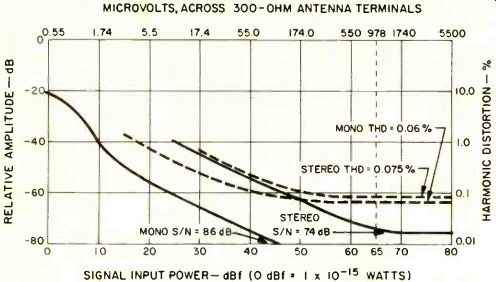
Fig. 1--Mono and stereo quieting and distortion characteristics, FM section,
wide bandwidth setting.
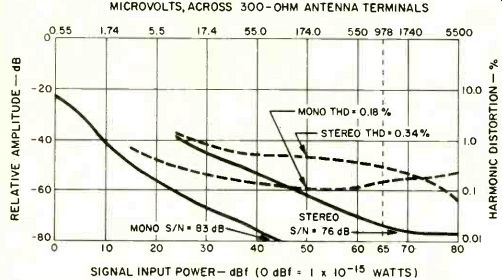
Fig. 2--Mono and stereo quieting and distortion characteristics, FM section,
narrow bandwidth setting.

Fig. 3--FM frequency response and stereo separation for wide (A) and narrow
(B) bandwidth settings. Middle trace is separation with blend filter on.
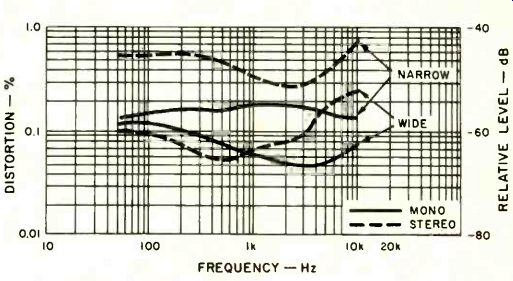
Fig. 4--Distortion vs. frequency, FM tuner section of the Mitsubishi DA-R20
receiver.
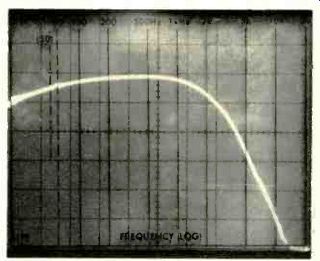
Fig. 5--AM frequency response.
Separation at the three IHF-required test frequencies of 1 kHz, 100 Hz and 10 kHz was 58 dB, 54 dB and 48 dB. Note the almost straight-line crosstalk characteristic (lower traces of Figs. 3A and 3B; this is remarkable for any stereo FM decoder circuitry. The middle trace of each figure shows how separation is compromised when the blend switch is turned on to reduce background noise of weak-signal FM stations. In the narrow i.f. setting, separation decreased to 44 dB at 1 kHz, 42 dB at 100 Hz, and 39 dB at 10 kHz-all still very acceptable separation figures for any tuner.
Capture radio measured 1.3 dB, while AM suppression, image, i.f. and spurious rejection were all just about equal to published claims. Frequency response was within 0.5 dB of flat from 30 Hz to 15 kHz. Distortion versus frequency for mono and stereo and for both the wide and narrow i.f. set tings is plotted in Fig. 4.
AM tuner section frequency response was typical of that found in most stereo receivers and was 6 dB below a 1-kHz response reference at 2.5 kHz, as shown in the spectrum analyzer plot of Fig. 5.
Amplifier Measurements
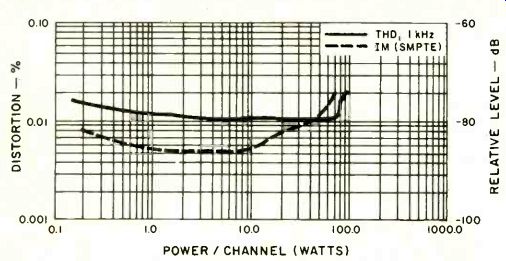
Fig. 6-THD at 1 kHz and SMPTE-IMD vs. power output per channel.
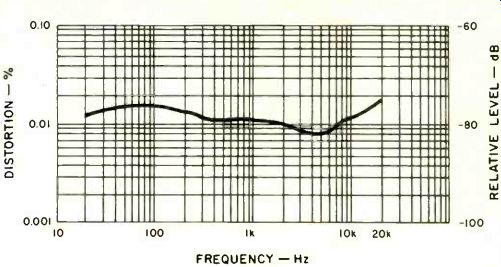
Fig. 7--THD vs. frequency at rated output.
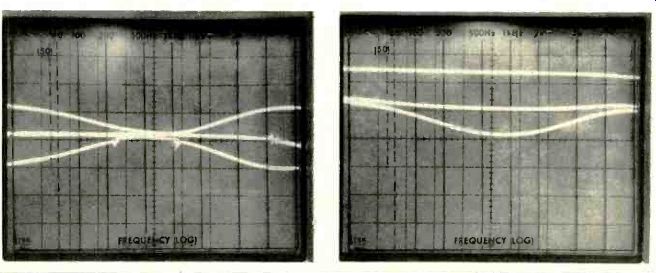
Fig. 8- Tone control range, Mitsubishi DA-R20.
Fig. 9--Loudness control range.
With a 1-kHz input test signal, the amplifier section of the DA-R20 receiver was able to deliver 87 watts of continuous power per channel into 8-ohm loads as against its 60 watt per channel rating. This output level resulted in a rated THD level of 0.02 percent, as graphed in Fig. 6. An SMPTE-IM distortion level of 0.02 percent was reached for an equivalent power output level of 76 watts per channel, both channels driving 8-ohm resistive loads. At the frequency extremes of 20 Hz and 20 kHz, the amplifier delivered 85 and 82 watts per channel respectively for the rated THD level of 0.02 percent.
Power bandwidth extended all the way up to 35 kHz (for 60 watts output at 0.02 percent THD), and the amplifier could be legitimately rated at something greater than 80 watts per channel as against the conservative 60-watt rating assigned by its manufacturer. Damping factor at 50 Hz measured just over 100. Slew factor measured 50 volts per microsecond, as claimed.
We were somewhat surprised to find that the IHF dynamic headroom was far better than claimed. We measured an un usually high figure of 2.6 dB for this relatively new specification, and it may be that the people at Mitsubishi are misinterpreting the measurement procedure for dynamic headroom, thereby doing themselves an injustice in quoting only 1.0 dB for it. Figure 7 is a graphic plot of harmonic distortion versus frequency for a 60 watt per channel output level driving 8 ohm loads.
Phono input sensitivity for the MC input mode was 0.018 mV (for 1-watt output) and 0.32 mV for the MM inputs. Pho no overload occurred at 150-mV input (1 kHz) using the MM inputs and at 14 mV for the MC inputs. Signal-to-noise ratio for MM phono measured 85 dB (new IHF method), while for the MC inputs it was 77 dB. High-level input sensitivity for 1-watt output was 19 mV; S/N ratio, again referred to-watt output (for 0.5-volt input) was 88 dB, increasing to 91 dB (still referenced to 1 watt) with the volume control at minimum setting.
RIAA equalization was accurate (via either the MC or MM phono inputs) from 20 Hz to 20 kHz to within ±0.2 dB. Frequency response via the high-level inputs was flat from d.c. to 95 kHz for a -2.0 dB roll-off.
Bass and treble control range of the tone controls supplied on the DA-R20 is plotted in the 'scope photo of Fig. 8, while the action of the separate loudness control is shown in Fig. 9. Note that the total range of this control (at mid-frequencies) is approximately 23 dB. In use, the listener would set the master volume control for lifelike loudness levels and the secondary loudness control to its flat (clockwise) position. Then, if lower-than-live listening levels are required, the user simply turns the loudness control counterclockwise (leaving the master control at its original setting) for proper and meaningful loudness compensation. Judging from the results obtained in the plot shown in Fig. 9, Mitsubishi seems to have gone a bit overboard in treble compensation (some even maintain that no treble compensation is actually required). In every other way, however, the design of this separate loudness control system is just as it should be, and it is far more effective than those arbitrary types which simply convert the volume control into a loudness control without paying any attention to actual program source or ultimate listening levels.
Use and Listening Tests
We spent several cays using the Mitsubishi DA-R20 as the central component it our reference listening setup in the lab and in our separate listening room, using both FM and re cords as program sources. We enjoyed using the set for FM reception, the pore so because we found its i.f. and detector system to be in perfect alignment relative to the meter and frequency indications. The AFC lock feature was close enough to providing optimum lowest-distortion tuning so as to discourage any quibbling about this feature on our part.
And, although bench measurements showed that usable sensitivity was a bit higher than claimed, we had no trouble receiving distant stations with good quieting once we connected our reference outdoor antenna to this unit. Some of the received signals, known to be of approximately 20 to 50 p V signal strength in our listening location, came through with virtually no audible background noise in mono and with tolerably little in stereo. As mentioned earlier, the muting threshold (at around 10 NV, or 25.2 dBf) presented no problems or the need to switch from stereo to mono. AM reception, though limited in response, did seem to have a bit better quieting characteristics and somewhat lower distortion than some of the competition, though this should not be taken as an unqualified compliment for this or virtually any other AM tuner section found in modern stereo receivers.
Amplifier performance was essentially on a par with that of the FM tuner section. The first thing that struck me about the preamp/amplifier combination when I started playing wide dynamic range records was that it seemed to be able to provide far higher output levels than its rated power figures would suggest. That is where the high dynamic headroom comes into its own. At a measured 2.6 dB, we calculated that short-term power peaks (such as are now increasingly present in digitally mastered discs and some direct-to-disc recordings) could successfully drive this amplifier to peak out put power levels of over 100 watts per channel! In recent testing, I have taken to using some dbx-encoded discs as program sources, especially when judging the dynamic range handling capability of a given piece of equipment. The DA R20 did surprisingly well when such discs, properly decoded, were used as a source.
One of the people at Mitsubishi Electric Corp. (or, more factually, at Melco Sales Inc., the U.S.-based subsidiary of Mitsubishi) suggested to me that, as an established manufacturer of separate components, the company utilized to as large an extent as possible the circuit designs and functions already present in their separates. He went on to suggest that to build a product in a lower price range (relatively speaking), some compromises were necessary, but that the company attempted to reduce overall price by the omission of non critical features rather than any changes in circuit configuration or quality of parts. Judging by my tests on the bench and in the listening room, I would say that these objectives were very successfully achieved. The Mitsubishi DA-R20 is not an inexpensive receiver in its category, but it is one which, in many ways, performs as well as separate components whose total price could easily exceed the cost of this model.
-Leonard Feldman
( Audio magazine, Aug. 1980)
also see:
Mitsubishi DA-R35 AM/FM Receiver (Equip. Profile, Apr. 1982)
Mitsubishi Model DA-F10 AM/FM Stereo Tuner (Dec. 1977)
Mitsubishi LT-30 Turntable (June 1981)
Mitsubishi DP-EC1 direct-drive turntable (ad, June 1977)
= = = =